Planning and Choices
![Aleksander Eliseev]() Aleksander Eliseev
Aleksander EliseevJust a quick note to start. This trip report covers a climb that starts on the NW side of the mountain at Dzhily-Su Zapad (a seasonal herding village east of Khurzuk), spends three excellent days hiking and climbing to the SW side of the mountain, and then climbs north on the western side of the mountain, from the SW slopes at Khotutau Pass, up on to and over Kukurtlu Dome and the Western Plateau, then continuing north to the NW ridge just below the West Summit, up that to the West Summit, finally descending by the normal South Route. The same route could be climbed in two fewer days by starting from the normal southern starting point of Terskol and using one day to climb to somewhere near the site of the helicopter crash referenced in the report. If you are interested in climbing the Northwest Face directly above Dzhily-Su Zapad, I have a project working on making that route more accessible. Read about it at https://elbrus4alpinists.org. And now for the report...
Like far too many people, I eventually decided to climb Elbrus simply because it was one of the Seven Summits, and because I had never been to Russia. I was not looking forward to the climb much, as the standard route from the south looked boring, dirty, and crowded. The climb from the north looked cleaner and much less crowded, but still boring. Then I learned that Google Translate could translate web pages from other languages. This changed everything for me. I started looking at Russian language pages about the mountain. I got quite excited when I learned that unlike American and European companies, which only offer climbs from the south or north, Russian companies will take you up the remote and seldom climbed east or west sides (with the west being the harder of the two options).
I am, at heart, an adventure seeker more than I am a climber. I would always choose a good adventure where I fail to summit over a boring climb where I reach the top of the mountain (or whatever other destination I set as an initial climbing/trekking/travel goal). As the NW route looked the most challenging, I decided to attempt that one. An additional motivation came from the knowledge that there were no trip reports from this side of the mountain. If I managed to complete the climb, I would finally have something meaningful to contribute to this website. I contacted mountainguide.ru (they have since created an English language page at mountainguides.pro) and explained my desire to book a private climb from the west. Sergey Baranov was very responsive, and we agreed on $2750 USD for a private climb, with Aleksandr Eliseev as my guide. I was unable to wire transfer money to their bank due to the sanctions currently in place on Russia, so Sergey said that he would trust me to just bring the money with and pay when I arrived.
![Andrei Eliseev on Elbrus West Summit]() Andrei Eliseev on Elbrus West Summit
Andrei Eliseev on Elbrus West SummitAleks turned out to be an excellent climber. He summited K2 (with oxygen) in 2007 and Manaslu (without oxygen) more recently in 2017 in an alpine style climb. Aleks brought his 16-year-old son, Andrei, along with us. Andrei was spending his summer working as his father's assistant. Also, he was studying English and wanted to take advantage of his father having an American client. Aleks and Andrei are fantastic people, and I enjoyed spending time with them. Both speak passable English and they helped me a bit with my considerably less good Russian. Andrei and I really hit it off, and we have remained in sporadic contact via WhatsApp following the climb. Aleks has a fantastic knowledge of the Elbrus area and can guide you to many places that American and Western European guides either can't or won't. An Elbrus adventure with him will be far superior to what 99% of climbers on this mountain experience. He does, of course, also guide clients on the standard south and north routes, if that is what you are looking for. You can reach out to Aleks directly at alexander_eliseev@icloud.com. I recommend checking with him to find out if he is available on a certain date.
One single note of caution, should you choose to hire a Russian climbing company. Russian commercial climbing guides have a reputation for not being like those in the US or Western Europe. Russian climbers are famous for having a high tolerance for risk. The guides don’t hold your hand and look over you, repeatedly offering helpful tips and guidance as a teacher would to a pupil. It’s more like climbing with a patient buddy. If you want more active guidance and instruction, as well as inquiries into how you are doing, as with American guides, talk about this with the company beforehand. Otherwise, they will show you where to go, not tell you what to do. My experience fit the stereotype perfectly. Personally, I was OK with the Russian style, as I am used to hiking and climbing alone, but everyone needs to know their own comfort zone and make the effort to communicate it.
At this point I want to bring up Summitpost member Michael Haifa. He made an awesome trip to roughly the same area in September 1994. Unfortunately, he did not submit a trip report. He did, however, submit many photos with useful titles/captions. Michael started in Khurzuk and hired a local as a guide. He then spent a considerable amount of time exploring and climbing the peaks on the south side of Ullukam Valley. The adventure that he undertook was far more daring than mine, and he did it in late 1994, when the Russian government was in the early stages of fighting a war with separatist insurgents in the North Caucasus nearby to the east. He hasn’t been active on SummitPost for a while, but if anyone reading this knows him, please reach out to him for me. I would love to hear about his experiences there, as I want to return to the area. Plus, Michael is simply one daring MF. We should all be willing to explore the world as he once did.
Saturday, June 23, 2018 - Arrival in Russia, Mineralnye Vody Airport
![Statue of Lenin]() Statue of Lenin
Statue of LeninMy Flydubai flight landed at Mineralnye Vody Airport just before 1:00 am on Saturday, June 23. I disembarked into the spartan entrance of the airport with the handful of others from the flight, which was only about 20% full. On arrival in the entrance hall, I was instructed to fill out a migration card, and was assisted in this by a security officer. After presenting my passport and migration card to the immigration official, things took a small detour. I was pulled out of line and escorted to a room nearby, where I was questioned by two security officers for over thirty minutes. They never quite got to any really focused line of questions. They asked about my previous travels, my education, my work, my family, what guns I used (too many Hollywood movies?), and, of course, why I was coming to Russia. Almost all of this information had been provided in the lengthy visa application, so I was confused as to the point. I was to get a hint later, however, when I was again detained (for a much longer period) prior to being allowed to board my departing flight. More on that later. Anyway, I was eventually released. I cleared passport control, collected my luggage, and went outside to meet my patiently waiting taxi driver.
If you don’t speak Russian (or even if you do), I suggest arranging your taxis through Kiwi Taxi online. You can set the pick-up place, time, and destination, and pay by credit card in advance. When the day of your trip nears, they will email you the name and cell phone number of the driver who has been assigned to you. The rates are good, and there is no worry about getting a fake taxi or being given the “tourist rate” and driven the long way. I paid $14 USD each way for the thirty-minute drive between MRV Airport and the Inturist Hotel in Pyatigorsk. My Russian language skills are poor, and the driver spoke no English, but that didn’t matter as he had all of the info he needed from the online booking. I arrived at the hotel without incident.
![Looking west from Statue of Lenin]() Looking west from Statue of Lenin
Looking west from Statue of LeninI chose to find my own way from the airport to a hotel I selected and booked myself, instead of using the standard pick-up by the guide’s company and use of their contracted hotel, both to feel a bit independent and to provide a rest day not included in the contracted time of the trip. This turned out to be a great choice, and if I go back I plan to add one more day for rest and exploration on top of that. I had booked a suite (the double size of the room gives ample space to spread out your gear) at the Inturist for Friday and Saturday nights to enable me to check in at 2am Saturday morning the way I would if I was staying at a hotel here in the US. The desk clerk, however, only charged me for Saturday night - a pleasant surprise. The room was clean and had a nice view. Get the “mountain side” instead of the “city side” of the hotel, if you can. The "mountain side" view is far superior.
The area of the city near the hotel is quite nice, and I really enjoyed my time there. Visually, much of it reminded me of Mendoza, Argentina. There is a park adjacent to the hotel on the south/front side. The park is linear in design and gets wider on the western end, which is officially named Ploshchad Lenina (Lenin Square). The western end has a fountain and benches, and is wooded rather than paved. The eastern end climbs up quite a few stairs to a large statue of Lenin that can also be seen from the upper rooms on the mountain side of the hotel. There are good restaurants and bars, as well as a shopping district with a grocery, pharmacy, and sporting goods store with climbing equipment within walking distance SW of the hotel. If you would like information and recommendations on places I visited in Pyatigorsk, you will find it in the "In Pyatigorsk" section at the end of the trip report.
Pyatigorsk is not Moscow or St. Petersburg. It is a resort town of sorts. People were smiling (I'm told this is uncommon in public in Russia) and I felt safe taking shortcuts alone in unlit alleys at night. There were children and unaccompanied women all over in the dark of the summer night. I never saw one person who looked even slightly concerned for their safety. Perhaps this is one benefit of living in what Americans would consider a police state, though I never once knowingly saw any law enforcement in the city (not all police wear uniforms, though). I want to mention that the one option that the hotel offers, which I don’t recommend, is buying the breakfast. It is served in a grand dining room, but I don’t think most Americans would find the food worth the walk from their room, even if it was free. Pack some food in your luggage or walk into town to a restaurant. I bought food for lunches at the grocery store. I had breakfasts packed in my luggage already.
Sunday, June 24, 2018 - Drive to Dzhily-Su Zapad
![Khurzuk]() Khurzuk
Khurzuk![Jeep trail up Ullukhurzuk Valley]() Jeep trail up Ullukhurzuk Valley
Jeep trail up Ullukhurzuk ValleyAleks arrived at my hotel room after breakfast, as we had arranged, to inspect my gear prior to departure. He took out a few of the pieces of warmer clothing that I had packed in case the forecast changed for the worse. He also took out a lot of my food as he said that he was well supplied there. Otherwise, everything looked fine, and we headed out after repacking and putting my remaining luggage in the hotel storage. We walked outside and I discovered Aleks’s son Andrei was waiting in a taxi with the driver. Aleks explained to me that we needed to use a taxi to get to our starting point, as we would be descending a different side of the mountain. I climbed into the back seat with my pack situated between me and Andrei (the trunk already being stuffed full of gear) and we took off.
After about 3½ hours of driving in hilly and scenic terrain (in which we saw few people) we arrived in Khurzuk, the last village on the west side of the mountain. We unloaded our gear and had a tasty lunch in a local home. We ate boiled potatoes with homemade butter and homemade cheese, followed by a kind of homemade yogurt - lots of everything and all very good. After lunch we reloaded our gear into a large and serious looking off-road vehicle (no photo, unfortunately) and left for the mountain. We drove up a rough road (really just a jeep trail) for about a half hour, heading more or less east up the Ullukhurzuk Valley. We then took a spur road to the left toward Dzhily-Su Zapad, where we were planning on camping, and arrived shortly thereafter.
Dzhily-Su Zapad (2,550m) is a seasonal camp on the NW flank of the mountain with a few houses for local herders. There were a lot of cows and yaks, but only a handful of people. We camped just below the village near a hot spring (which was unfortunately not running hot at the time we were there). Over dinner, Aleks mentioned that he wanted to consider altering our plans, but I left that discussion until the morning. We finished dinner and went to bed in pleasant weather.
![Jele Soo West]() Jele Soo West
Jele Soo West
Monday, 25 June, 2018 - First Day of Hiking - Koltsevoy Pass and Ullukhurzuk Valley
![My planned route up Elbrus from northwest - directly above Jele Soo West]() My planned route up Elbrus from northwest - directly above Jele Soo West
My planned route up Elbrus from northwest - directly above Jele Soo West![Above Jele Soo West - NW face of Elbrus in sight]() Above Jele Soo West - NW face of Elbrus in sight
Above Jele Soo West - NW face of Elbrus in sight
After breakfast, Aleks and I talked about how he wanted to change our plans. He said that I had booked a ten-day trip, but the route that I was planning wouldn’t take that long. He proposed, and strongly urged, an alternate plan. He wanted to spend three days circumnavigating the mountain from NW to SW, which would allow us to see the stellar terrain on that unusually jagged and scenic part of the mountain. Aside from a few ambitious trekkers, the only people to visit that area were Russian climbers who wished to test themselves on the Kukurtlu Wall, a Russian grade 6b, which is one of only two in the country. We would then ascend from the SW, moving continuously northward, until we intersected the route I had previously planned on the NW ridge just below the western summit. I agreed reluctantly, but I soon became happy with the choice. It was a good adventure.
![South to Koltsevoy Pass]() South to Koltsevoy Pass
South to Koltsevoy Pass
Departing camp at 8:30am, we initially walked southeast up a beautifully flowered slope toward the head of the valley. We were soon treated to excellent views of the NW face of the mountain and of the direct route to the west summit past the rock Utyug (translation "iron", like for ironing laundry) where I had planned to ascend. We next veered right/south to follow a stream to a visible saddle in that direction. It is much better to stay to the right of the stream as you climb upward, as this is the same stream which comes from the pass and there is a lot of very tiring boulder hopping on the opposite side. We hiked at moderate intensity for four hours to reach the saddle at 3350m. The saddle is wide and flat with a lake and took about 30 minutes to cross.
![Looking back north at Koltsevoy Pass]() Looking back north at Koltsevoy Pass
Looking back north at Koltsevoy Pass
The descent south to the head of the Ullukhurzuk Valley is steeper, with a lot of bad loose scree and sand in the lower portion. We followed a small trail to the left as we neared the bottom, and then lost the trail near a beautiful waterfall (extra dark spot center right of picture). We had to find our own way down to, and then down from, the large lateral moraine. We had some difficulty finding a good place to climb down the moraine to reach the outlet stream below the icefall. I slipped and took a hard fall as I was trying to climb down the moraine, which resulted in cuts and scrapes, as well as really deep bruising, on both my upper and lower right leg. Luckily, none of the cuts were deep, and I was able to continue on without much delay. I did get to laugh at myself a bit, though, as the fall came not 30 minutes after I had expressed my pleasure with the day’s hike and commented “and I’m not even bleeding yet!” to Andrei. Bonus - the wounds resulted in some scarring that will give me a good excuse to bring up stories of this adventure.
In retrospect, it would have been better to leave the trail soon after it took a hard turn to the left up the valley. It crosses a scree slide here that would take you down to the lateral moraine more safely than following our route toward the waterfall. The trail and slide are clearly visible in the center of the picture looking back at Koltsevoy Pass. Also, the moraine is much easier to descend just a bit down valley from the slide. The descent from Koltsevoy Pass to the valley bottom at 2800m took 2 hours.
![Kukurtlu Glacier Icefall on west side of Elbrus]() Kukurtlu Glacier Icefall on west side of Elbrus
Kukurtlu Glacier Icefall on west side of Elbrus
The outlet stream below the glacier looked angry and dangerous in the summer heat, but we found a place that was only knee deep and it didn’t take very long to cross. Still, a slip there in the very fast water would not have been good. This stream is the start of the Ullukhurzuk River, and we were now at the head of the Ullukhurzuk Valley (which we exited when we took the spur trail to Jele Soo West). Following the stream crossing, we walked down valley a bit to where a stream descended from the opposite slopes, where it was running parallel to and above the main stream as it flowed on the outside of the other lateral moraine. We followed the valley side of this stream up for a while until we found a snow bridge which allowed us to cross. We climbed up a little until we found a good campsite on a green shoulder that we had seen from Koltsevoy Pass. The shoulder is directly below Kukurtlu South Pass and is visible in the photo of the pass, as is the other stream just mentioned. The photo is not mine, so the green line represents an alternate route for crossing the valley (we crossed below the glacier). The campsite on the shoulder offeres a stellar view of the icefall. The total distance covered that day was about 9.5km. We made camp and had another night of very pleasant weather.
![Fording stream below Kukurtlu Glacier]() Fording stream below Kukurtlu Glacier
Fording stream below Kukurtlu Glacier![Camp on green shoulder below Kukurtlu South Pass]() Camp on green shoulder below Kukurtlu South Pass
Camp on green shoulder below Kukurtlu South Pass
Tuesday, 26 June, 2018 - Climbing and Hiking Further South - Kukurtlu South Pass, Veronika Pass, EKT Pass, Ullukam Valley
![Kukurtlu South Pass]() Kukurtlu South Pass
Kukurtlu South Pass![Looking down to Veronika Pass after steep traverse]() Looking down to Veronika Pass after steep traverse
Looking down to Veronika Pass after steep traverse
We started the day in good weather, departing at 8:45am. We continued, at a moderate pace, up to Kukurtlu South Pass at 3700m. Stay to the left as you gain altitude here and climb to the leftmost saddle. It took us 4 hours to reach the top. We turned SE from here, trying to maintain altitude. The traverse and partial descent of the slopes on the other side of the pass has some steep sections where I would consider a fall unacceptable due to the length and steepness of the slope. I recommend using an ice axe and crampons on this section. After a short stretch that is steeper than the preceding areas (perhaps 65 degrees), the terrain suddenly became quite tame and we continued on in a SE direction on relatively flat ground through Veronika Pass at 3300m. This part took 1½ hours.
After another hour heading SE across relatively flat terrain, we climbed a short slope to a saddle (marked EKT on some maps) at 3500m. From there it was a two-hour descent down a steep and obvious draw to the Ullukam Valley where we were to camp. The bottom half of this descent was steep and tussocky and interwoven with yak trails - a real ankle breaker. We stayed on the eastern side of the stream (our left) after the snow bridges ended and veered away from the stream a bit as it entered a steep and narrow cut where staying close to the stream was not practical.
![Approaching EKT Pass]() Approaching EKT Pass
Approaching EKT Pass![EKT down to Ullukam to Khotutau Pass at center right]() EKT down to Ullukam to Khotutau Pass at center right
EKT down to Ullukam to Khotutau Pass at center right
We were faced with another river crossing when we reached the valley floor. This one also looked a little sketchy, as the water was high from both the summer heat and a rainstorm that had started an hour before. This water was the beginning of the Ullukam River, which joins the Ullukhurzuk river at the village of Khurzuk. We managed to cross safely, but then found ourselves unexpectedly forced to spend over an hour spread out searching for a level site big enough for our three-man tent. We eventually found some good sites a bit lower in the valley on the south side of the stream. Camp was at 2700m.
![These yaks wanted to raid our camp]() These yaks wanted to raid our camp
These yaks wanted to raid our camp
There was a large herd of yaks nearby that really wanted to steal our sweaty clothing. We had to continually chase them off until they finally relented and moved on up the valley at sundown. Fortunately, the rain ceased in time for dinner.
![Looking up at EKT Pass from Ullukam Valley]() Looking up at EKT Pass from Ullukam Valley
Looking up at EKT Pass from Ullukam Valley![Aleks at head of Ullukam Valley]() Aleks at head of Ullukam Valley
Aleks at head of Ullukam Valley
Wednesday, 27 June, 2018 - Khotutau Pass
![Campsite at top of Khotutau Pass]() Campsite at top of Khotutau Pass
Campsite at top of Khotutau Pass
This was an easy, short, uneventful day. After breaking camp, we climbed east up a large and obvious draw to Khotutau Pass at 3500m. This took us 3½ hours. We made camp in the single tent site located a few meters below the top of the pass and spent the rest of the day just relaxing. The only downside to the day for me was that I had picked up a lower respiratory tract infection either on the plane or in Pyatigorsk, and it really began to cause problems here after the previous two days’ exertions. I had no idea at this time of how big of a problem this illness would cause me higher on the mountain. At this point, I was still hoping that a half day’s rest would help me get over it. Note - if the tent site is occupied, you only have to continue a little further beyond the pass to find other alternatives.
Thursday, 28 June, 2018 - Elbrus Proper
![View of Elbrus from Khotutau Pass]() View of Elbrus from Khotutau Pass
View of Elbrus from Khotutau Pass![Old photo shows most of SW Route]() Old photo shows most of SW Route
Old photo shows most of SW Route
Today the real climb of the mountain began. Unfortunately, I was sick, and not really acclimatized, with campsites at 2550m, 2900m, 2700m, and 3500m. The high point of the trip so far was 3700m, and we spent no time there. The actual ascent ahead of me was to take three days, and with my cold worsening, I made a mistake in not slowing down the climb. However, I was hoping to make a descent of the seldom seen east side, and tried to hold to the schedule.
The day started with a short drop over the east side of the pass. We then turned northeast, heading toward the site of a helicopter crash. We walked across the edge of an ice field and soon found ourselves moving upward on a gentle slope to the crash site. After spending some time playing around in the wreckage, we moved on. At that point we turned north, and we held that general line of travel for the next two days, moving from the SW slope of the mountain to the ridge that led to the summit from the NW. Today it was up, up, up on ice and snow to a more level area and then over a large hump to our campsite.
The campsite was near the foot of the glacier that would provide us a perfect ramp up onto Kukurtlu Dome the next day. All of the climbing after the helicopter was on the Azau Glacier. We set up our tent near some large protruding rock spires that stuck up through the ice above the wall at the upper end of the Ullukam Valley to our immediate west. The site is left/west of the ramp in the center left of the photo marked "Ramp to Kukurtlu dome...". We were now on top of the cliff that we could see from near our camp two nights before. Today we smelled the volcano venting some sulfur gasses for the first time. Camp at 4100m.
Two fun bits from this camp. The first was a feature of the large cliff visible to our NW. The glacier on top of the cliff was scouring a band of very red rock, which it then carried over the top of the cliff with the ice. This gave the cliff the distinct appearance of bleeding from the top - a very good blood red in the clear light. Second, we had a little extra time after setting up camp. Andrei decided to have some fun and started to excavate a large hole in the snow slope between our tent and the rock spires. He dug down at an angle into the rising slope. I joined him for a while. He told me that he was making a toilet, and I said that we should carve a lifelike toilet into the mountain. Andrei worked for maybe an hour and a half, with me joining in occasionally. When it was finally done, we had a urinal on a raised platform at the bottom and a very nice toilet in a stall next to it. Due to the depth of the hole, you could have actually used this in a full blizzard in relative comfort. Well done, Andrei! He really added a little humor to the climb.
![Snow Toilet - Thank you Andrei!]() Snow Toilet - Thank you Andrei!
Snow Toilet - Thank you Andrei!Friday, 29 June, 2018 - To Kukurtlu Dome and the Western Plateau
![Ramp to Kukurtlu Dome is center left]() Ramp to Kukurtlu Dome is center left
Ramp to Kukurtlu Dome is center left
The weather had been warm, so we started today a little earlier (with a 5am departure). It later became apparent that we should have left even earlier - perhaps 3am. The glacier on the ramp (Glacier N 313, a now detached part of Ullukam Glacier) had many crevasses covered by snow bridges, and we were only half way up when the surface snow began to melt in the warm sun. As we moved upward, we began to experience strong bouts of sulfur gasses from the dormant volcano. Several of these were strong enough to cause me some nausea. Coupled with my lung infection, this was enough to really start taking the joy out of the adventure for a while. I was feeling very ill by the time we made it up onto the shoulder and out to a flatter section of the glacier. At this point I wanted nothing more than to crawl into my sleeping bag and rest, but some very strong winds hit the mountain not long before we made it to camp. We had to spend over an hour digging a platform and raising a small surrounding wall for the tent. Even with a semi-protected tent platform, raising the tent in the high winds proved very difficult for the three of us. Once the camp was finally established, we were limited to a 10m radius of the tent, due to the prevalence of concealed crevasses in the ice. I was glad that we only climbed for 5 hours that day. Camp at 4900m.
![A quick break on the ramp - West Summit in view]()
![Climbing up to Kukurtlu Dome - Ullukam Valley below]() Climbing up to Kukurtlu Dome - Ullukam Valley below
Climbing up to Kukurtlu Dome - Ullukam Valley belowSaturday, 30 June, 2018 - Summit Day
![Camp on top of Kukurtlu Dome]() Camp on top of Kukurtlu Dome
Camp on top of Kukurtlu Dome
This was not a good day for me. I woke feeling quite ill. After breakfast, I began to make preparations to depart for the summit, hoping that I would start feeling better as I got more active. I had real doubts, though. My breathing was bad, and I talked to Aleks about just resting for a day. The campsite wasn’t a pleasant one, hovever, since we were basically stuck in the tent due to the crevasses, and I could see the displeasure on his face. Aleks told me that the summit was only a half day’s climb away, but never actually pushed me in my choice. We talked of camping that night in the saddle next to the emergency hut located there, and then going up and over the eastern summit to descend the east side of the mountain the following day. The decision was difficult to make, but I eventually chose to break camp and head upward.
My decision to climb, instead of rest, was more about getting a chance to see the east side of the mountain (while keeping within my ten day program) than it was about getting to the summit, as I still had one climbing day in reserve. Anyway, for me, the summit really wasn’t all that important, as that wasn't the primary goal of my trip, only a potential bonus. I just came to Elbrus to have a fun adventure and to see some rarely visited territory. You don’t get much in the way of bragging rights for summiting Elbrus, and none of my friends or family are climbers, or even remotely interested in the sport. I could have flown to Pyatigorsk, done some basic tourist crap, and then flown home, and it would have sounded like just as much of an adventure to the people in my life - so no pressure there. But the decision was made, and off we went.
![Crossing the West Plateau between Kukurtlu Dome and Elbrus West Summit]() Crossing the West Plateau between Kukurtlu Dome and Elbrus West Summit
Crossing the West Plateau between Kukurtlu Dome and Elbrus West Summit
The first couple of hours were scenic and easy. We moved over rolling glacial terrain toward a rock face that made a nice backdrop to our exertions. I was surprised by two sights in this area. First, by a large tent encampment located on the plateau to our east, just above the northern edge of the inverted U shaped gouge in the south side of the West Plateau. This gouge is to the immediate east of the ramp we had climbed the day before. Since returning home, I have been able to find out what this activity was. It was the Ice Memory Project. An international team had been helicoptered onto the plateau and was drilling deep ice cores here in June and July of 2018, following similar activity on the Col du Dome Glacier in the Mont Blanc Range, at a difficult location at 6300m on the Illimani Glacier in Bolivia, and on the Belukha Glacier in the Altai mountains. These ice cores will be stored in ice caves under the Concordia Research Station in Antarctica, along with others that will be collected from up to twenty more sites around the world in the next two decades. The goal of the project is to create a global archive of glacial ice for future generations of climate researchers to study. My second surprise was walking past the largest crevasse that I had ever seen, even in photographs. It looked like you could easily drop a large office building into it. Standing near to it really brought to the forefront of my thought the high number of climbers who have died in crevasse falls on this mountain.
Please note that if you look at our .GPX track, you'll see that the data from our camp on the Western Plateau all the way to the NW ridge is missing. I don't know what happened with the GPS. Just head north from camp on what looks like the most reasonable route and you'll do fine. We didn't make any crazy deviations.
After a few hours, we made it to the steeper terrain to the west of the western summit. We began a more strenuous climb at this point that never abated until we reached the top. It was here that I really regretted my decision not to take a rest day. Two things quickly became apparent to me. First, the weather was taking a serious turn for the worse. The skies were clear, but the wind became a dangerous obstacle. The slopes from here to the summit were never all that steep, but they were very icy at points, and the extreme winds repeatedly made me jam my crampons and ice axe pick into the slope and huddle down in order to prevent being blown off of my feet and sent into an uncontrolled slide, with nothing but occasional protruding rocks between me and the truly steep faces below. A fall in this area, in icy surface conditions (barring a rapid self arrest), would likely prove fatal. That said, in decent weather this area would make for a generally pleasant summit climb. The second problem was that my illness had progressed to a serious form of bronchitis. My breathing took on an odd, both scary and simultaneously curious, quality. Every deep breath was noticeably audible and sounded, to me, like the woodwind section of an orchestra warming up. Also, I had been coughing for days at this point, but now the bouts of coughing became severe. I was forced to take brief breaks to breathe, often half collapsed, more and more frequently.
Eventually, I was forced to stop and explain my condition to Aleks. My head was fine and clear, and I had no lung rattle, so I wasn’t worried about any kind of edema or AMS. Still, breathing was extremely difficult, so I decided to dig out the Nifedipine that I was carrying in case of HAPE and I took one. This soon seemed to be a good choice. As we continued upward, my breathing became noticeably less labored and the audible element, as well as the worst of my coughing, subsided. From there it was a slow and steady climb to the NW ridge, which we then followed SE to the western summit.
The summit winds were very strong - strong enough that I would have been happy to stop a few meters short of the summit and head down by the standard route. Aleks, thankfully, urged me to crawl the final thirty meters or so with Andrei so he could take a picture of us. We crawled the last few meters on our hands and knees and anchored ourselves with our axes for a memorable photo. I’ve previously played around in 80mph winds on a few occasions. Twice in my life I have been picked off of the ground and flown through the air by extreme straight line winds, once in a place where the meteorological equipment had been ripped from the mountain by wind that read 170mph before the equipment failed. I found it difficult to gauge, but estimated the wind to be gusting over 100mph. The situation was clearly dangerous, but I judged that being blown from the summit would probably have resulted in only moderate injury, as the terrain immediately downwind wasn't terribly scary and a self arrest should have been possible before too long. Kneeling, let alone standing, for the photo wasn't an option. The summit photo felt risky but fun. Never before had 5642m seemed so dramatic to me.
![Too windy to stand on Elbrus West Summit!]() Too windy to stand on Elbrus West Summit!
Too windy to stand on Elbrus West Summit!
From here it was all downhill. We followed the usual and well marked path down to the saddle, but the winds remained high and my breathing remained poor. As we entered the saddle my bad coughing resumed, and to my deranged amusement, I began to cough up a lot of blood. Still, my head was clear, and I had no worries about my overall safety. I just assumed that it would be a slow couple of weeks spent recovering from my illness. Anyway, we made it to the emergency hut in the saddle and spent well over an hour there to allow me to recover some strength. The hut was at 5350m and we finally arrived at 4:40pm.
It was definitely too windy to erect our tent in the saddle, so it was either spend the night in the shelter or descend to the south. I would have preferred to spend the night there. I was really wiped out, but judged that my breathing was strong enough to safely spend the night at that altitude. I could then decide to go east or south in the morning (almost certainly south). However, I had two things that would thwart my decision to stay. First, there were two other climbers who had already stowed their packs in the small shelter, and when they returned it became clear that they intended to stay. The shelter had two small benches and the floor between, room for three climbers at most, unless everyone was to spend the night seated upright. Second, Aleks wasn’t interested in fine tuning a diagnosis. As most guides would, he stuck squarely by the maxim "in case of illness, descend immediately".
This normally good advice actually made my problems worse. No longer carrying my heavy pack, I was finally breathing without effort in the hut. As the two other climbers were healthy and happy, they probably should have given the shelter to the ill climber. As friendly as they were, this was never offered, however. The winds were still too strong to establish camp there, and Aleks just wanted to get me off of the mountain at that point, so, despite my strong objections, I was forced to shoulder my pack and start to descend to the south.
My breathing immediately became very labored, and I struggled to maintain a steady pace in the dark and cold. At many points I fell to the ground, forced to simply breathe and nothing more. After what was probably two hours of stumbling and bumbling in abject misery, I finally told Aleks to call for help. I was going to pay for us to get a ride down on snowmobiles for the remaining 1000m, from 4700m to the company cabins above the top of the ski lifts at 3700m. Once the call was made, we didn’t have to wait too long. The snowmobile driver arrived, picked me up, and sped down the mountain. Next, he went back for Andrei, and then finally for Aleks. The simple bunkhouse cabins were warm, clean, and quite spacious for a party of three, as they were designed for eight. I was breathing quite easily now and actually had a great night’s sleep.
Sunday, 01 July, 2018 - Terskol
![Andrei Eliseev on Elbrus West Summit]() Andrei Eliseev on Elbrus West Summit
Andrei Eliseev on Elbrus West Summit
We woke up a little late and went to the adjacent company kitchen and dining cabin where we made a leisurely breakfast. We took our time here, enjoying the simple pleasure provided by eating at a table under electric lights. Eventually, we returned to the bunkhouse to pack up. From there, it was only a 15-minute walk or so down to the upper lift station. The large gondola lifts made the descent down the remainder of the mountain relaxing, providing a good view of the bottom of the mountain. Aleks was able to draw my attention to several points of interest as we scanned the lower mountain. I was feeling relatively good now, and I was experiencing surprisingly little guilt over not actually completing the whole climb - descent included - on foot. At the bottom of the mountain we got off of the lift, grabbed a taxi, and went to the small but very comfortable hotel named Alamat where I was to spend the night.
After I got checked into the hotel, Andrei offered to show me around the area, but I wanted a shower and to have a few minutes of quiet, so I arranged for him to come back later in the afternoon. After washing up and putting on clean clothes (which I had stowed in the bottom of my pack for use after the climb), I decided to begin a course of Clarithromycin that I had carried in order to treat respiratory (and a few other) infections. I also called my wife and asked her to change my flights so that I could fly back on Wednesday the 4th instead of Saturday the 7th. Later, feeling tired but happy, despite my still raging bronchitis, Andrei and I took off on a short hike through the forest, which looped back to the road at a souvenir market. I picked up a couple of small things, including the obligatory Matryoshka nesting doll for my two-year-old daughter Eliana.
We returned to the hotel by way of the road this time and met Aleks for a very nice dinner there. After dinner, Aleks and Andrei left for the house where they stayed between climbs, and I settled in for a little relaxation myself. It was World Cup 2018 time and Russia had a game that evening. The game was on the television in the lounge. Being the height of summer, however, there were few people in the hotel, which I assume caters mostly to skiers. I saw just one other guest and a few locals who showed up to watch the game. After the game ended and the locals left, the hotel staff decided to go home, as I was the only one remaining in the lounge. I guess they figured that there was no way I would drink enough beer to pay the wages of whoever would be there to serve me. In yet one more example of how friendly and polite the people in this area are, they left the bar open when they went home. A notepad and pen were left on the bar, and I was told to just write down what I drank and that I could pay when the staff returned in the morning. I sat down with a section of a dismembered hard cover copy of Reinhold Messner’s “Antarctica” that I carried on the climb, had a few more beers, and finally retired feeling quite pleased with myself.
Monday, 02 July, 2018 - Back to Pyatigorsk
Aleks and Andrei joined me at the hotel for a tasty breakfast. Despite having almost no guests in the summer, the hotel seemed to maintain a good kitchen. After breakfast I paid the previous night’s bar tab, which was comically low compared to any ski resort in America. One thing Russia has in abundance is cheap alcohol. Shopping in Pyatigorsk, I picked up a couple of bottles of decent wine for almost nothing. I have heard that if it isn’t French, no one here is willing to pay real money for it. Apparently they negotiate some good prices from other regions. I brought home, as a souvenir, a cork from wine made in the Republic of Abkhazia (a part of Georgia that broke away in the brief Russo-Georgian war of 2008).
Checking out of the hotel, I climbed into a car with Aleks, Andrei, and two women (who worked as cooks at the hotel) with whom they are friends. As the climb had ended a day earlier than scheduled, Aleks and Andre had just enough time to drive home and visit family before their next scheduled climb. The cooks also had a break and we were all headed to points along the same line of travel. The drive was scenic and pleasant. We made a brief stop in Tirniaus to drop off one of the cooks and, once again, everyone was pleasant and welcoming. Scenically, a portion of the drive east of Terskol reminded both Aleks and me of a part of northern Italy that we had both seen. Before long we were in Pyatigorsk, where we dropped the second cook off before continuing on to the Inturist Hotel. Soon we were shaking hands and promising to keep in touch. As always, it was a little sad to say goodbye to new friends, but I was grateful to have gotten to know them a bit, and I honestly wished them only the best. Andrei and I are still in touch, and I have sent information to him on places to hike and climb in the US in case the opportunity ever presents itself, offering to provide any assistance that I can.
Once at the hotel, I retrieved my luggage from storage and went up to my suite to begin repacking for the return flight. After a shower, I decided to make a return visit to Magnit for groceries, and then went back to my room to eat lunch and take a nap. After the nap I ate dinner in my room, as I was still feeling pretty rough. I did go out after dark for a walk and a few drinks, but the weather was uncomfortably humid for me, and I soon returned to the comfort of my air-conditioned suite.
Tuesday, 03 July, 2018 - Farewell to Russia
After a long night’s sleep, I woke and had breakfast in my room. Then the repacking began in earnest. I spent the bulk of the late morning and afternoon hours packing and replenishing lost calories. I had arranged for Kiwi Taxi to pick me up a little after 8pm, and decided after packing that I still had time to walk over to the Georgian restaurant Kolkhida for dinner. This made for a very nice conclusion to my time in Pyatigorsk, as the meal and setting were both excellent. After dinner I returned to the hotel, grabbed my bags, and went out front to meet the taxi.
I arrived at the airport by 9pm for my 1am flight, not wanting to risk any problems departing. I wasn’t able to check in yet, so I went to the lounge, where I had a glass of wine and read a little. When my flight number was finally called, and I was able to check my baggage, I encountered a problem. The Flydubai staff kept wanting to charge me for my "overweight" baggage, even though both bags were under 50lbs and my flight had originated in the US. The staff and I were unable to resolve the problem, their English being as poor as my Russian. Eventually a supervisor was called. It still took a while, but at some point he remembered that flights to and from the US had different weight limits and he sheepishly apologized for all of the confusion and checked in the bags.
From here I went to passport control. When I provided my documents and the agent entered them into his computer, something apparently happened, because there was a phone call and then security services arrived. I was once again pulled out of passport control and politely, but firmly, escorted to a nearby room for questioning. This was a surprise to me, as I was departing this time. I was questioned for well over an hour. During this time the security officer made a remark that stuck in my mind. He told me that the flight "would not be allowed to depart until we are finished". Why would they delay a flight for me? Anyway, the questioning went on and on. Most of it went nowhere beyond the lines of questioning that I faced entering the country.
In retrospect, the questions I faced this time were a little harder and deeper, with less friendly implications. On a normal day this would quickly have begun to piss me off. However, I was in a great mood and refused to take things too seriously. I joked around a bit, smiled and laughed, complimented the agent on his English skills, and generally decided not to let this dampen my experience in Russia. Two things finally drove the seriousness of the situation home. First, they took my phone and recorded its IMEI number. I now assume that they have hacked it (not that they would find anything interesting). Second, after many rounds of questioning, I was asked point blank who I know at the CIA. I told them that I had gone to college with someone who joined the CIA, but that I haven’t heard from him since. I guess that they judged me to be sincere, as it wasn't long after this that they finally allowed me to board the plane and the flight departed.
Having time to reflect since the trip has allowed me to put a few potential dots together. For whatever reason, they seemed to dig into my information a little. I guess things would have looked odd to me as well if I was in their position. I’m mostly a ghost online. I have no social media presence. I look, physically, like I’m active military - lean, muscular build with a buzz cut. I speak directly and confidently, not at all like an average tourist might if pulled into an interrogation room. There is only one photo of me online where my face is recognizable. This is from a newspaper article announcing that I had accepted an appointment to the US Military Academy at West Point. The photo is of me with the US Senator who gave me the appointment.
So, from the Russian perspective, I get it. They see me posing with a Senator on my way to West Point. Then I disappear. No Facebook. No Twitter. I arrive as a ghost who looks military, has training in multiple languages, has a wife who is the daughter of African diplomats, has a passport full of stamps from around the world, and who hired a Russian climbing company no American has heard of to take me to an unstable border region where Russia has recently fought three wars (one with Georgia and two with islamist separatists), where US diplomats are still banned from travel. All this while claiming to be a truck driver who just wants to do a little climbing. Yeah, I think that get it now. I’m an odd bird and my file raised a few flags. They seemed to think that I might be some kind of US government agent on non-official cover. To their credit, they were always polite. I was never made to feel that I was in physical danger, and I never seriously doubted that I would be allowed to go home eventually. Plus, I was immediately conscious of how I could use the experience as fantastic fodder for storytelling with my friends.
Wednesday, 04 July, 2018 - First Class
The Flydubai flight was almost full this time and it had an interesting mix of people, including students from Africa who decided to go to college in Russia. We soon arrived in Dubai and I made the trek from the remote terminal used by Flydubai to my connecting gate in the main terminal. When boarding began I was given a final and very pleasant surprise. I had been bumped from economy all the way to first class on my Emirates flight to Chicago. This. Was. Awesome. Except that it has ruined air travel for me for all time, as I will never be willing to pay for this. I could climb another mountain for the price differential, and I will make that choice every time. The flight home was relaxing, as I was actually able to lie down. I felt rather beat up (with the injured leg and overall exertion), and my illness still hadn’t begun to abate despite the antibiotics, but some good food and wine helped me to sleep. In the end, it took a few more weeks before I began to feel healthy again. Arriving in Chicago, I made my way to immigration control and had a new perspective on the process here. I didn’t even mind the line for once.
Reflection
This was a thoroughly enjoyable trip, with absolutely no complaints, which is something that I have never experienced previously in my travels. That being the case, I have no choice but to recommend this trip with my highest regards. There are, of course, a few small difficulties, which is normal. Most of these involve money. Russia still has, at the time of this writing, sanctions on it. They don’t look likely to be lifted soon. You can’t wire money there, but Wise (formerly TransferWise) is supposed to work, since money doesn’t actually cross borders. You add money to a pool in the US and withdraw it from existing pools in other countries they operate in. The fees are quite reasonable. I should mention that I had no problems carrying several thousand dollars in cash into the country. There are a lot of stories out there of travelers being extorted at the airport, but this didn’t happen to me, despite my problems with security. Also, I had no problems with ATMs in Pyatigorsk. The Google Translate app allowed me to point my phone at the ATM screen and see decent live translations of the options presented there. Russian ATMs do, however, have lower transaction limits than those here in the US - probably a means of collecting more in fees.
For once, I find that I have both a reason and a desire to return to a mountain which I have just successfully climbed. The reason is that the NW face of Elbrus that I came to Russia to climb is still unknown to me, as is the eastern side of the mountain. Trying to do a west to east route would check off both boxes - up the NW face to the Western Summit, down to the saddle, up to the Eastern Summit and then down the wild east side. This definitely seems interesting enough to cause me to revisit this mountain while others on my list still remain unclimbed. I would also consider a ¾ circumnavigation of the mountain, with the same starting point. This would be a trek from the NW, moving in a clockwise direction and ending in Terskol. The desire to return comes from the simple fact that I had a damn good time on this trip. I like Pyatigorsk and want to see more of it. The drive to the west of the mountain and the drive back on the east side of it are both nice, and I think that it would definitely be worth spending a few days around the villages on the west side, if it could be arranged. The whole area around the mountain (except the standard route on the south) is beautiful, offering a lot of great terrain to explore and trek in, with challenging rock walls and seldom climbed peaks (at least by non-Russians) to test yourself on if that is your thing. If and when I do make it back to Elbrus, I definitely intend to reach out to Aleks to see if he is available. He has a fantastic knowledge of the mountain and the surrounding region. I'm sure that he could facilitate any adventure I am able to dream up.
![Rural Russia]() Rural Russia
Rural Russia![Poverty in Russia]() Poverty in Russia
Poverty in Russia
An absolute bonus is that the people there, both the relatively wealthy Russians that you will meet in Pyatigorsk, and the much more poor villagers in the country surrounding Elbrus, are friendly and engaging. If you or someone you know has traveled to Moscow or St. Petersburg on business, this will upend your idea of what Russians are like. If I do return, I plan to bring along small gifts to dispense in Khurzuk or somewhere similar. I have done this previously in remote villages in Northern Zambia, and the gesture seemed to be truly appreciated. Gifts for children can be quite small. Sweets are easy and enjoyed by most. A soccer ball and pump make a great gift to be shared, and if you play soccer with the local kids for a few minutes people seem to noticeably relax their suspicions of the stranger in the village. I expect that even gently used warm clothing would go over well. Given the extreme poverty of rural Russia (22% of Russians live on less than the official poverty line of around $2,000USD
per year, and another 36% make just enough for decent food and clothing, with nothing left over for long-term purchases, according to a November 2018 study by the Russian Presidential Academy of the National Economy and Public Administration), I would bring good quality winter clothing that your children outgrew long before wearing out. Children’s clothing takes up less space in your luggage and it avoids the potential awkwardness of giving a gift directly to a proud adult. You can give it to an adult, and they can have the joy of giving it to a child. Russians have a reputation for placing children on a high pedestal, but I seriously doubt that the limited Rubles the families here have are spent quite that extravagantly on their kids. I also intend to bring a few delicacies to share, should I get invited to eat with the locals again.
I want to say here that I hesitated quite a bit before including the preceding paragraph. I know that it carries the scent of Western Paternalism and classism. I don't want to offend anyone, especially the wonderful people in these villages. I just want to help them, and anyone who can afford all that is involved with international climbing trips can make a difference in people's lives here for what amounts to little more than a rounding error in the cost of a climb. It seems selfish and self-absorbed to me to travel in wealth and comfort through the homes and lands of good people without sharing a little of our good forture with them.
I welcome all questions and polite criticism that readers of this report may have. I would love to learn more from others who have been to the area, correct my misperceptions and false memories, and help fellow travelers hoping to explore near to where I have been. Please provide correct info if you have knowledge which can make this report more accurate or more helpful to others in a revised version. All well-meaning comments are appreciated.
I used several images that I found online in the creation of this trip report. If any of them belong to you, and you wish them to be removed, just contact me and I will take them down. Thank you to Aleks and Andrei for providing many of the pictures from this trip.
***UPDATE***
I decided to actually do something to change some lives on the west side of Elbrus. To that end, I am organizing the Elbrus4Alpinists Project. You can read a little about the project, see our excellent team, and donate or volunteer on the project website elbrus4alpinists.org. I recently (September 2021) returned to Khurzuk with Mark Higton FRGS to discuss the project with the people of the village. We were introduced to the community at a cultural festival and treated as guests of honor. There is a lot of excitement around the work we will be doing, and many people are volunteering their help or their ideas on how we can implement and expand the project.
Mark and I also repeated my previous ascent of the SW route (with Alex again serving as our guide), this time beginning at Mir Station on the south and traversing west across the Malyi Azau glacier towards Khotutau Pass and Kremlin Rocks. You can see a few photos from the traverse and climb on my instagram matthew.c.johnson1. We had terrible weather, getting stuck in the tent below the plateau during a thundersnow storm that had our ice axes buzzing, faced avalanche danger, and struggled with continuous gale force winds on our summit day (see summit vid on Instagram page). Luckily, we had sufficient warm clothing to survive and succeed. This was not the case for another party on the mountain when the strong winds returned four days later, costing five lives (see news reports).
Musings
I want to mention here a recurring sadness in my life. I believe that I have failed to inspire my loved ones to experience the indescribable joys that I have discovered. I want to share with everyone the amazing love and freedom, the absolute transcendence of everyday life, that I have experienced on adventures such as this, to my eternal benefit. It is a rare gift, in the history of the human race, to be able to choose to temporarily shake free of the bonds of daily life, at a time and place of our choosing, and to regain them at our whim. In exploring a space where beauty and pain are one, where life and death are at the whim of the moment-to-moment choice, we experience the hubris of imagining the mind of the Divine.
In is commonly said that in war, you form the strongest of bonds in an environment that can challenge your belief in God, that can cause you to doubt the power of love, and even question the value of life itself. In the toil and risk of true adventure, be it on land, sea or air, you form the same bonds, in an environment that strenghtens your connection to God, that enhances your belief in the power of love, and that unceasingly reinforces the value of life. It is a continuing wonder to me that this can be done in as little as a week, without injury or sickness, and that the whole of humanity isn't lining up to take part.
I have spent hundreds of days alone, where being alone is deeply painful, so that I can spend a handful of days alone, where being alone is sublime, where it puts you in touch with that which is eternal, and gives you the merest glimpse of what man could have been without The Fall. In such places there are no tribes, no nations, no enemies. Every man and woman is your brother or sister. I have put my life on the line for yours, and you for mine, even if we have never met before and don't speak each other's languages. We are all children in a Garden of Eden produced by mutual struggle and shared joy. This is the only place that I have found where there is no fear of your fellow man.
The spirit of adventure is the desire to test yourself against the unknown at the same time as you embrace it, to seek to a greater knowledge of both yourself and the world around you, risk be damned. It is the choice to gamble your very existance, at times, in the pursuit of setting yourself as a contestant in a fight in which you will not know your adversary until after the bell of combat has been rung. It is an all-or-nothing struggle that you enter in the hope that, should you survive, you will finally have a window to look through in the search to understand who you truly are and how you fit into a universe full of wonders.
If we fail to embrace all that we have been made capable of, we show little difference from a child of parents "of means" who makes and desires nothing of him or herself. We are then nothing more than an object lesson on wasted opportunity and ungratefulness.
If your spirit is free and brave, you will hear the call. If your mind and body are strong and disciplined, you will be able to answer the call.
It is my belief that it is a crime against our Creator to allow ourselves to give up our sense of wonder in the world around us, no matter the reason.
In Pyatigorsk
Restaurants and Bars
![Tesla Grill]() Tesla Grill
Tesla Grill
Tesla - I was served a nice meal in a relaxed environment at Tesla to the west of the hotel. It is a large, two story restaurant, with open air dining areas facing the street on both levels. These areas have a relaxed feel with very comfortable seating. There is more upscale dining in the interior. They had English-speaking staff and they have a website (tesla-grill.net). I used Google Translate on their menu at home before I left, but the staff made that unnecessary. I believe they even have an English language menu it you ask for one.
![Wood Bar]() Wood Bar
Wood Bar
Wood Bar - Wood Bar, a smallish gastropub, can be found one block south of Tesla. Wood Bar is located in the basement level of the building, so look for the sign and stairs down, turning left at the bottom of the stairs. I only had drinks there, but the food looked really good and they had by far the best import beer that I saw in the city. The establishment was quite busy on the night I visited - standing room only when I arrived.
Both Wood Bar and Tesla are located on the west side of Prospekt 40 Let Oktyabrya, which is a N-S road one block west of the larger N-S artery Prospekt Kalinina. If my memory serves, there is a pedestrian underpass on Prospekt Kalinina located on the south side of Ulitsa Kozlova, the E-W street which passes between the blocks where Tesla and Wood Bar are located. If it is not that intersection, than it is within a block or so either way. The underpass is lighted and felt safe at night.
![Kolkhida]() Kolkhida
Kolkhida
Kolkhida - The best meal of my trip came at a Georgian restaurant named Kolkhida. Kolkhida is much closer to the hotel, and is located next to the east side of the Lower Market. On Google Maps, search for the American Bar and travel east to the other side of a small N-S street or alley. The restaurant was large with both indoor and outdoor dining areas and live music in the evenings. The food was fantastic. Best Greek salad I’ve ever had (very big!) and a good cheese plate as starters. I dove into them to the point where I could only politely pick at the excellent chicken dish that I had intended to be my meal. The picture is of the interior, but I thought that the adjacent open air dining area was much nicer.
![Zlato Bar]() Zlato Bar
Zlato Bar
Neither the Wood Bar nor Kolkhida had English-speaking staff, but Google Translate came to the rescue again, helping with words and phrases that I didn‘t know, as well as with translating the menu in Kolkhida.
American Bar (also called Ambar) - American Bar is located SW of the Inturist in the same area as the Lower Market, the restaurant Kolkhida, and the sporting goods store Equipment Center “Primus”. It was nearly empty when I stopped by briefly one evening, but it looks like it would be a great party bar on a busy night.
Zlato Bar - Zlato Bar is a cozy basement-level bar with outside dining, located a block west and a block north of the Inturist on the NW corner of Ulitsa Mira and Ulitsa Kraynego. This might be a fun bar during televised sporting events. I did not try the food. I believe they had some craft beer.
Shopping
Grocery - There is a grocery store (one of the Magnit chain, I think) in the Lower Market - a small enclosed mall only about 2-3 blocks to the southwest of the hotel, near American Bar and Kolkhida, where I repeatedly went to buy food and drinks. There is also the Upper Market - a large traditional (but partially modernizing) market - three blocks to the northwest of the hotel.
Sporting Goods - While there are sporting goods stores all over Pyatigorsk, most tourists won’t have access to a car. Therefore I will recommend two. 1. Equipment Center “Primus” - This store is a quick walk from the Inturist. It is located just west of American Bar on the opposite side of the same street. This is a smaller store, but it has an adequate supply of climbing gear should you find that you left something at home. 2. Ekvator Pro - This store is not walking distance, but it is close to the Inturist as you approach by taxi from the airport on the main N-S road Prospekt Kalinina. This is where you should go if the airline lost one of your bags and you have the money to replace everything. They are very well stocked with climbing gear in name brands that Americans are familiar with such as The North Face, Arc’teryx, Outdoor Research and La Sportiva. I recommend doing a quick Google search of both establishments prior to leaving for Pyatigorsk. Copy down addresses and phone numbers, or print a map with the stores marked on it. That way you can give the necessary info to a taxi driver should you need to make an emergency visit. Bonus - a Google image search of either store will yield a good virtual tour of the store, allowing you to see the products actually on their racks.
Pharmacy - There are two nearby pharmacies. Both are over by American Bar and Equipment Center “Primus”. One is Pharmacy Low Prices. This is located immediately east of the Central City Library near the SW corner of Lenin Square. The other, at which I purchased bandages for my leg, is Social Pharmacy. If you start at the intersection west of American Bar, turn south and it will be a half of a block down the street on your right/west. The N-S street is Ulitsa Kraynego.


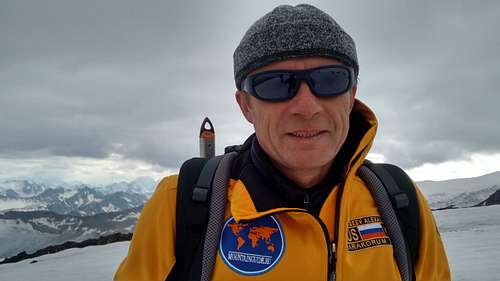
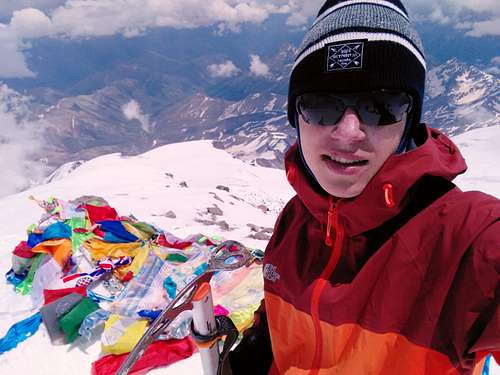
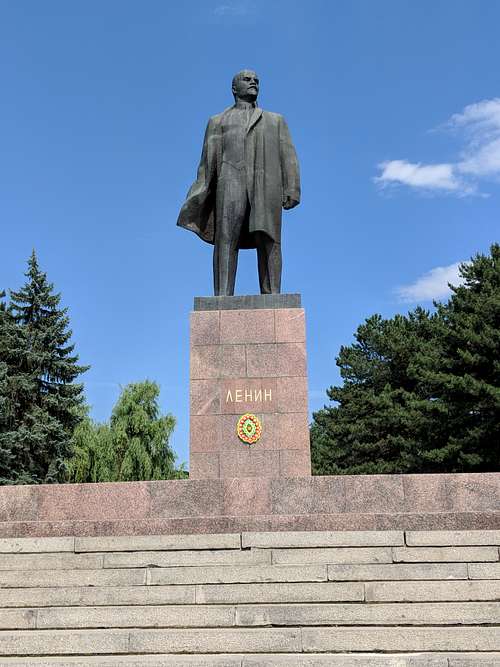
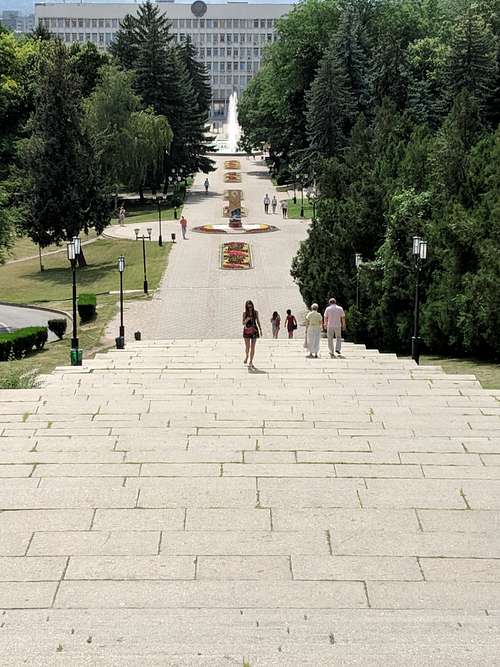

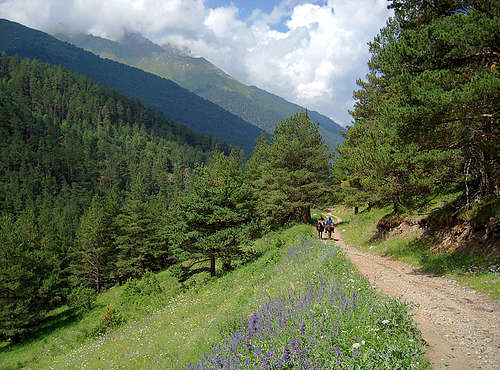

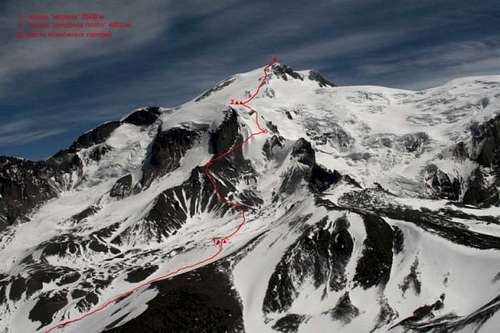
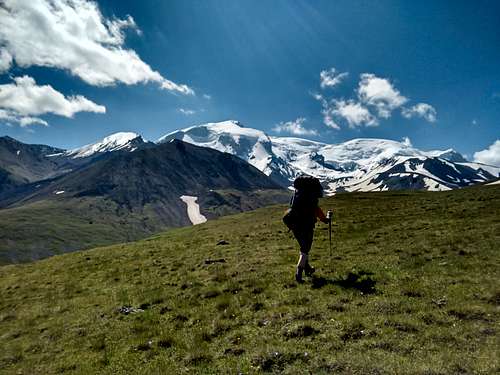
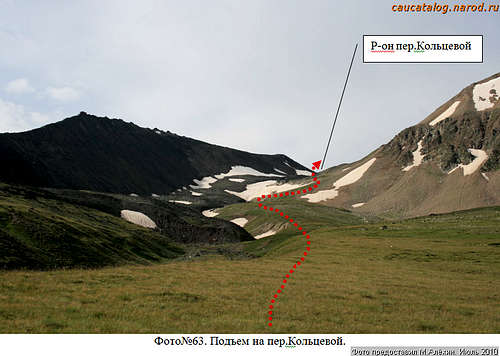
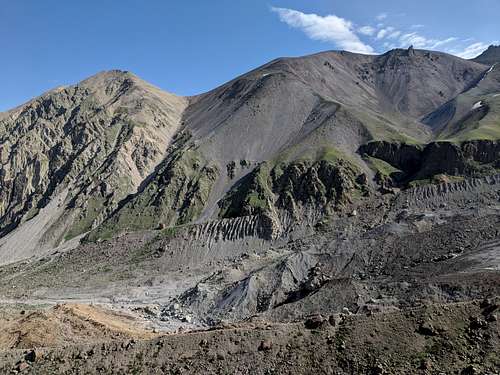


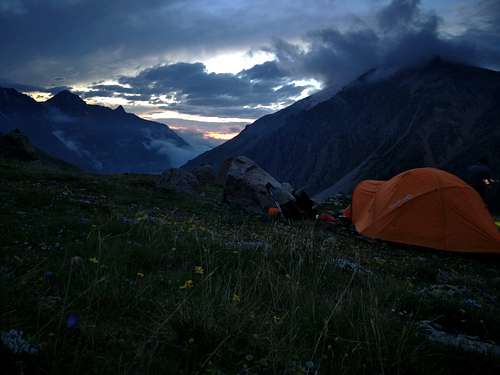

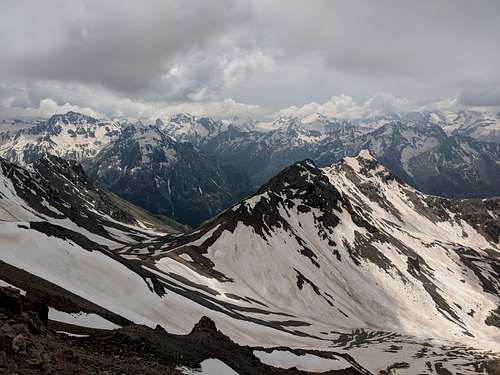

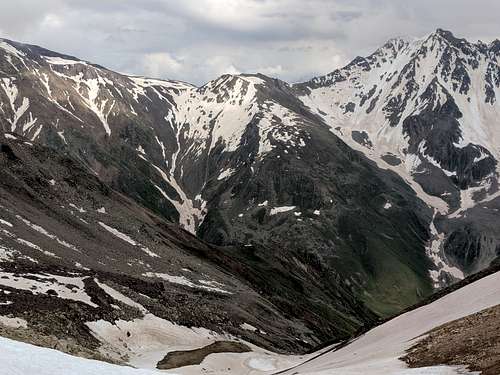
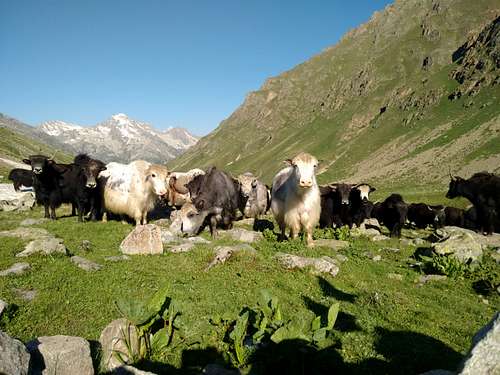
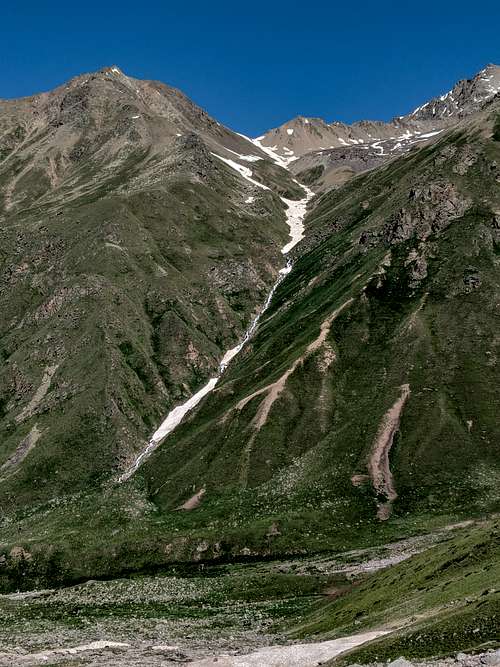
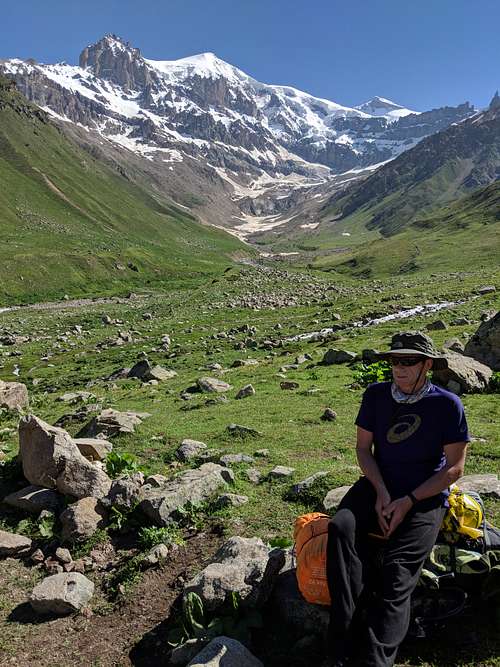
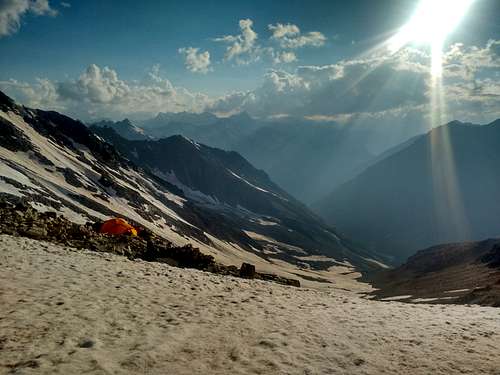
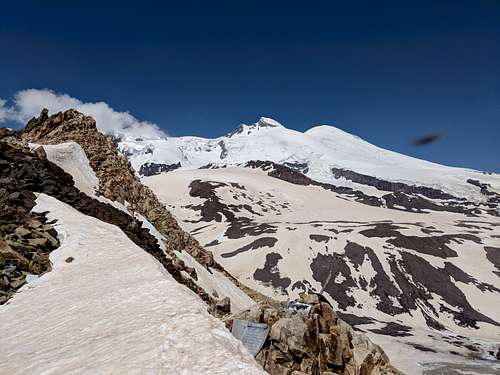

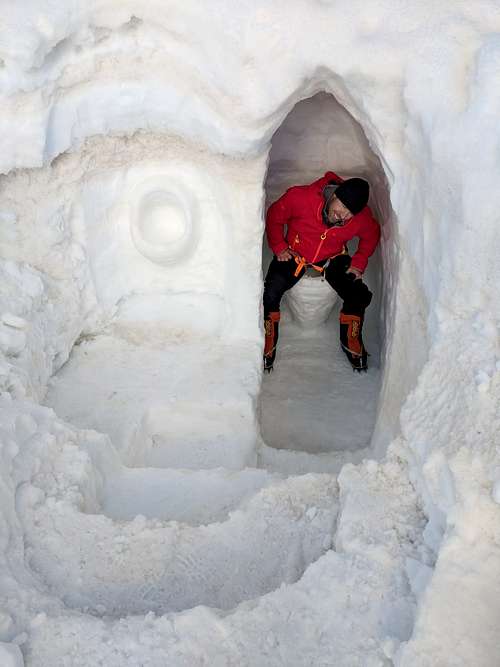
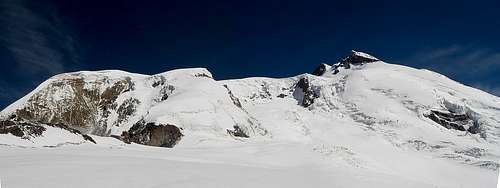
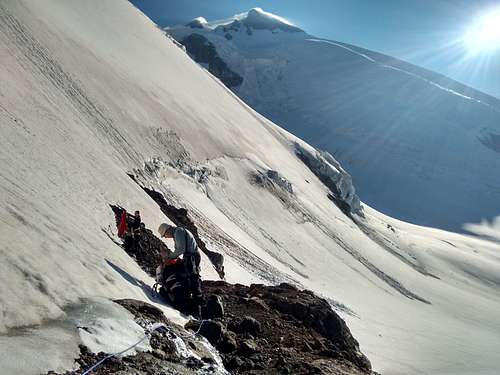

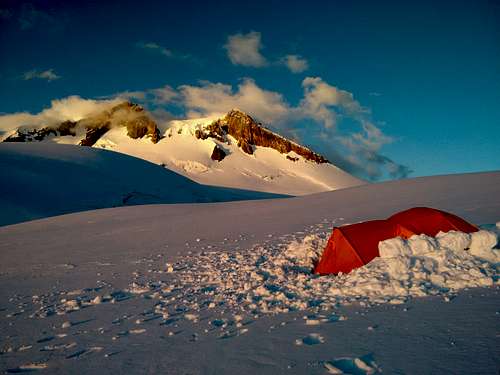
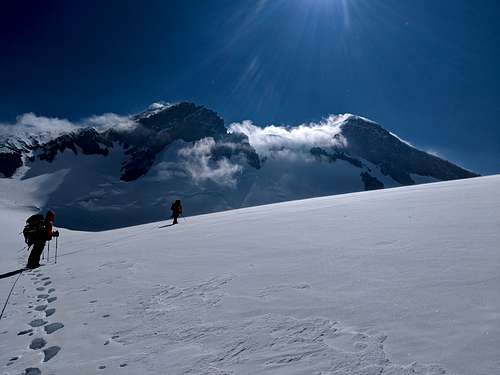
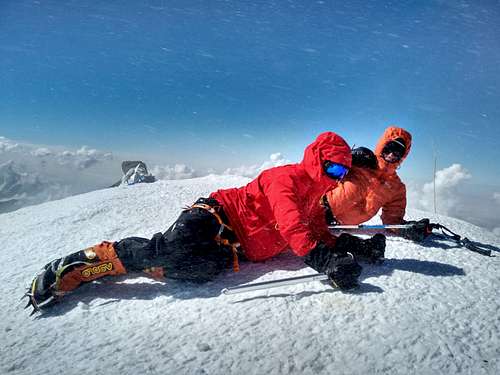
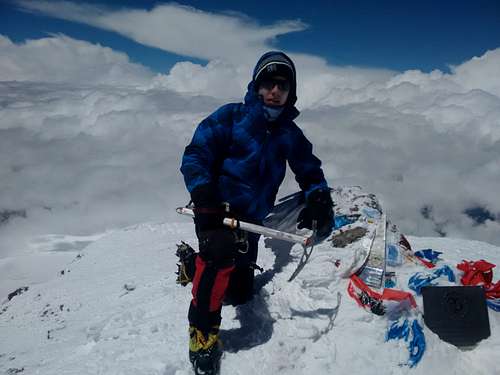

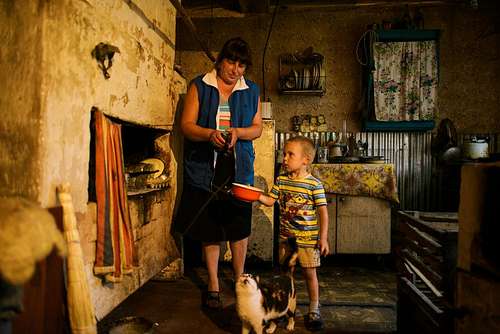
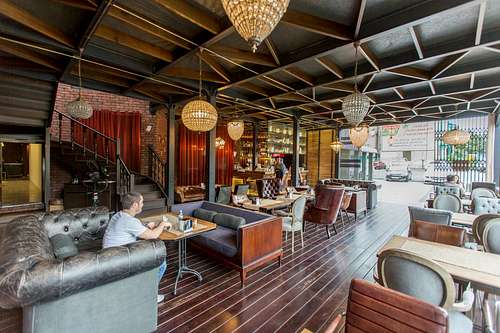
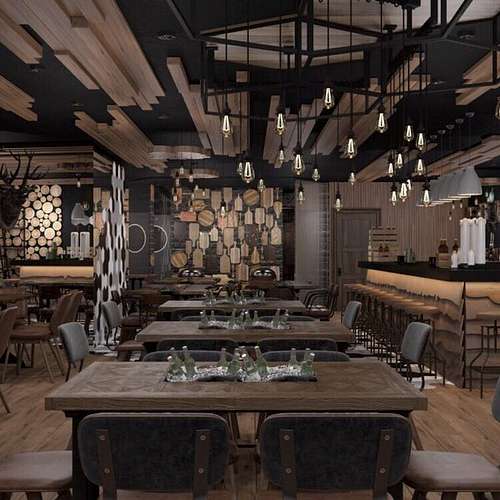
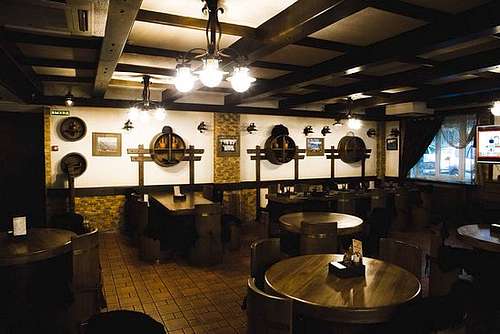

Comments
Post a Comment